Meaningful Organizational Narratives
Over 100 years ago, John Dewey wrote that “all communication is educative.” Yet, as we live in an ever-noisier world, our organizations often approach communication from a place of desperation to feel ‘heard.’ From more emails, to post after post on social media, they are trying anything possible to connect with their members.
This blitz/barrage tactic still is not achieving success. For some, the philosophical approach of the power of narrative in communications has been accepted in theory. Yet, communication budgets still too often focused on .pdf design and brochure printing. If nonprofits are going to connect with their constituencies, it is going to be through a learning and story mindset.
Whose voices are needed for any story that will have authenticity in what they have to share?
If all communication is educative, then what is the story trying to teach?
What is to be learned?
How is the listener invited to be a part of the story?
As we shift from a “building awareness” mindset to a “narrative and invitation mindset,” there are four approaches to the story that an organization can use to learn and grow:
1. Narratives of intent. Strategic organizations who are focused on creating a better tomorrow know there is a journey between now and then. Stories of intent can share aspects of an organization’s vision, mission, and the better future it is striving to create. These can be moonshot aspirations of the world decades hence or plans in progress where results may first emerge in just months. Either way, authentic voices who feel inspired by the vision, sharing their own excitement at the organization’s aspirations and commitments, can provide meaningful connections.
2. Narratives of effort. Often, when we are the ones making effort and it is consuming much of our time, we live in a bubble where we assume those in our network are as aware of the effort as we are. We may repeat stories of where we are excelling and the challenges we are meeting to several individuals on a daily basis, but that doesn’t mean those stories are sparking ripples of greater awareness. When an organization is investing resources – fiscal, staff, volunteer – then continual and meaningful stories of how efforts are progressing is key. These stories may not signal achievement by completion, but they can serve as a bridge between intent and outcome. When stakeholders have invested in your organization – through dues, through donations – they should remain in the loop on the good their investment is creating. And, with pictorial representations of effort and progress being made, even without the final product, they can relate to the journey of the effort.
3. Narratives of impact. Often, our organizations are their own worst trumpet blowers. Stories of progress – even if they are not yet fully realized – still demonstrate organizational strength and garner excitement. Those self-same narratives can also include meaningful moments of recognition for those who have played a key role in supporting progress. When an organization has successfully launched and executed an effort, stories of how the effort is making impact can be much more engaging than narratives about the details of the program itself. We live in an experience economy where we make resource investment decisions based on the experiences of our peers and colleagues. Creating communication platforms for stakeholders to tell the story of how organizational effort has made impact, elevating and amplifying those stories, can both raise the perception of the organization as well as drive interest in others in experiencing the impact for themselves.
4. Narratives of recognition. In each of these stages, there are many groups and individuals who meaningfully contribute in a variety of ways. Rather than the organization subsuming all the credit, stories recognizing those who contribute along the way can make the narrative more personal. Once recognized, it is more likely an individual will tell the story of the organization’s intent and investment through their own lens. When a culture of gratitude infuses an organization’s approach to communications, the story of the organization is a story of the many who are a part of it, shedding hubris and demonstrating an inclusive and gracious core.
Through these approaches to organization narratives, there is an inherent opportunity for an organization to infuse a learning mindset. What is the organization hoping the content consumer will learn from the story? What action do they hope they will take? What can the organization learn, in turn, from the end user? If narrative is a bi-directional communication methodology, what can the storyteller learn in return?
A reframe of our organizational communications as intentional narratives of learning, experience, and invitation can shift how our organizations and communities alike connect and grow.
